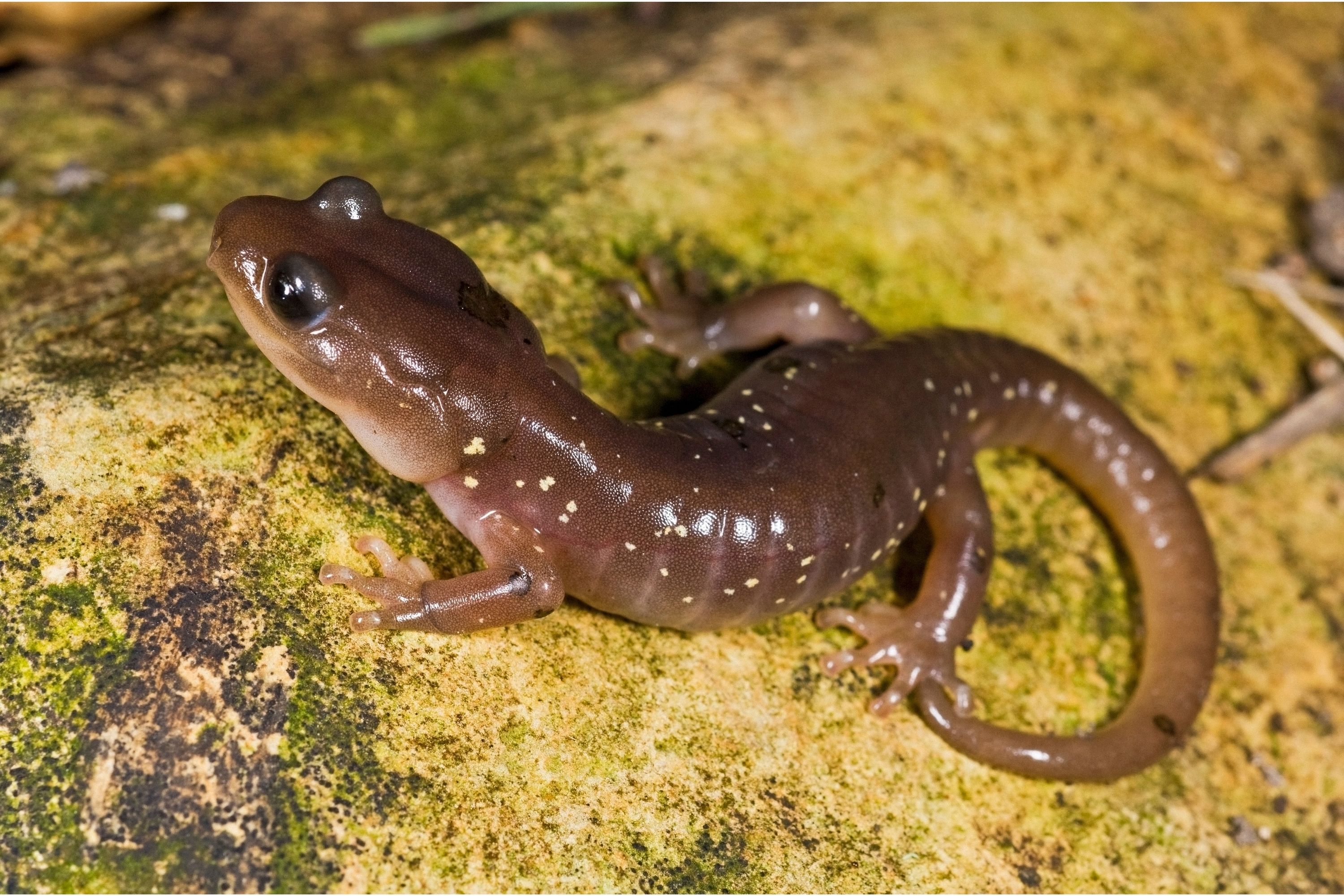Arboreal salamander
(Aneides lugubris)

Description
The arboreal salamander (Aneides lugubris) is a species of climbing salamander. An insectivore, it is native to California and Baja California, where it is primarily associated with oak and sycamore woodlands, and thick chaparral. Aneides lugubris is 6.5–10 cm (2.6–3.9 in) SVL (snout-vent length), with plain purplish-brown coloring, usually spotted dorsally with gold or yellow, although it may also be unspotted. The tail is prehensile. The juvenile is dark overall, clouded with greyish color and fine yellow speckling on the back. The male of this species can be distinguished by its broad triangular head, with the front teeth of the jaw extending beyond the bottom lip. This species is an excellent climber and difficult to capture. It is nocturnal, spending daylight hours and dry periods in the cavities of oak trees, often with many other individuals of its species. A large adult can inflict a painful bite. Arboreal Salamanders hatch from eggs laid and guarded in burrows. Hatchling size is 24 mm SVL, age at maturity is 2.69 yr, and average adult age is 8-11 yr. Annual survival probability increases with age from 0.363 in age 0 to 0.783 in ages >4 yr. Because they are plethodontid (plethodontidae) salamanders they are lungless and breath through their skin. They can produce sounds which have been compared to a faintly barking dog. Aneides is a genus of watersheds. Aneides belongs to the family Plethodontidae.
Taxonomic tree:







